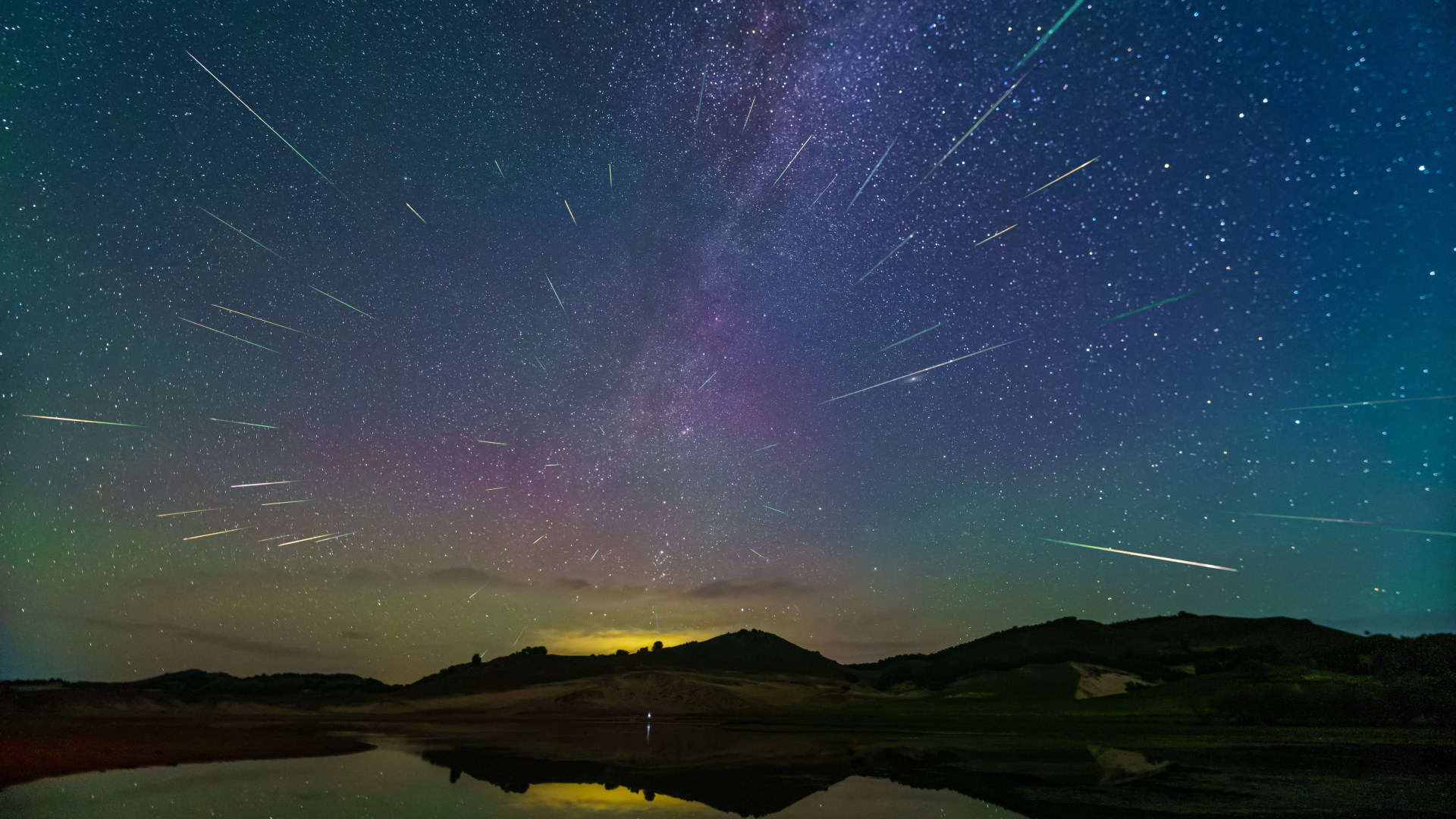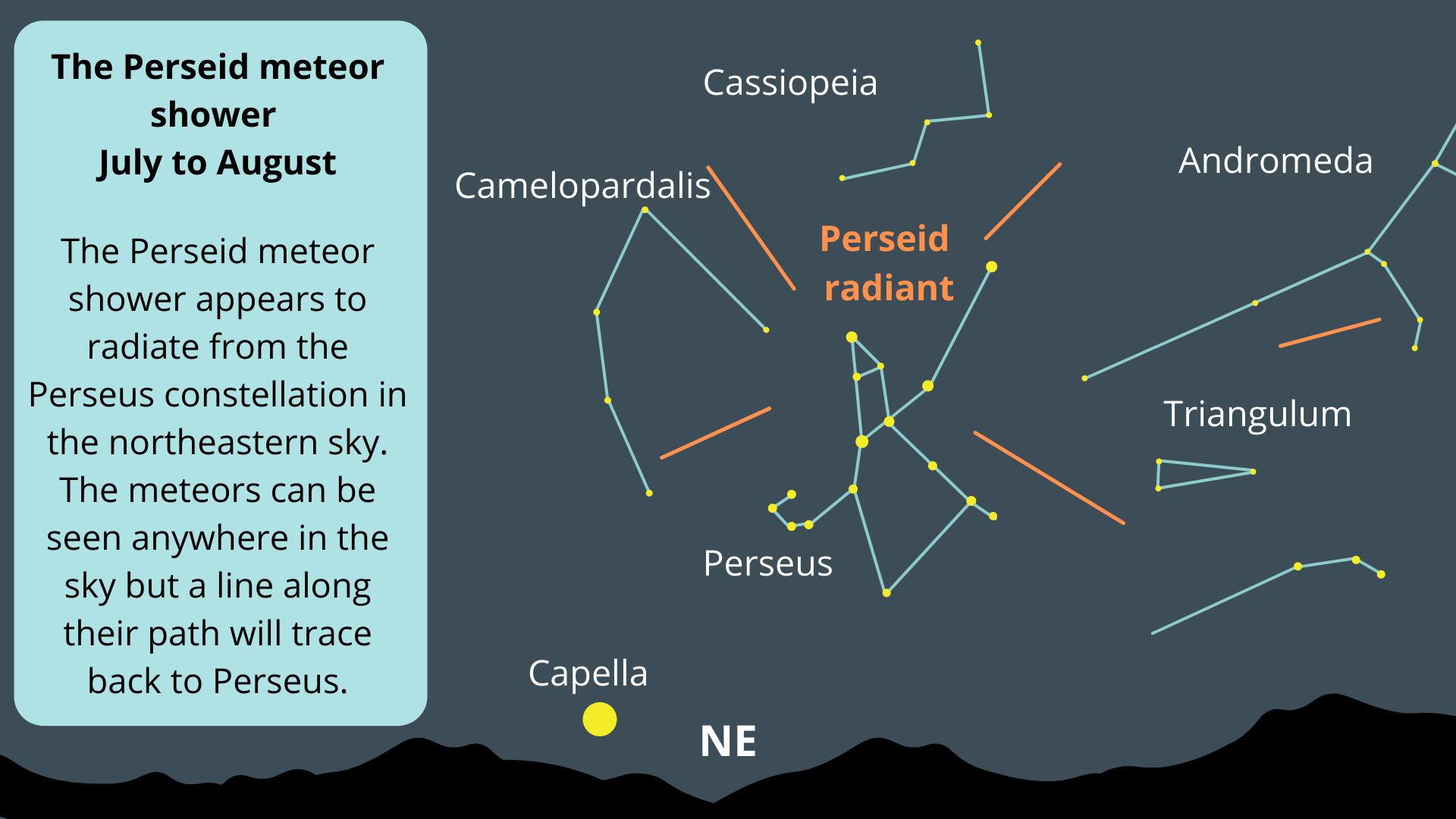Perseid meteor shower peaks this weekend — but 2028's show might be one for the ages

The Perseid meteor shower, due to peak this weekend, should put on a nice show — but an even more spectacular, if not stormy, meteor display may be in the cards four years from now.
Exactly 162 summers ago, skywatchers were admiring a beautiful new comet. Discovered in mid-July 1862 by Americans Lewis Swift and Horace Tuttle, the new object became favorably positioned high in the northern sky through the remainder of the summer. During the last week of August of that year, the comet was at its best, shining at second magnitude and displaying a long, bright tail. In telescopes, luminous jets of nebulosity blossomed outward from a bright, highly condensed nucleus.
French astronomer Camille Flammarion ranked Comet Swift-Tuttle among the 10 "really fine and striking comets" of the 19th century. Others would simply refer to it as "The Great Comet of 1862."
From this bright visitor, we learned quite a bit about comets in general and their relationship to meteor showers. Among the interesting points raised by this comet's mid-19th century appearance was the announcement in 1867, by the Italian astronomer Giovanni Schiaparelli, that the orbit of Comet Swift-Tuttle appeared to be nearly coincident with the orbit of the Perseid meteors. Schiaparelli postulated that the comet had discarded the tiny fragments that produced the Perseids as it swept through the inner solar system. These swift streaks of light appear to dart across our northern skies from their namesake constellation from late July through most of August.
Related: Perseid meteor shower 2024: When, where & how to see it
Comet crumbs
These cometary fragments — countless bits of metal and stone — are called meteoroids while they exist in and move through space. But a meteor is not a particle of matter itself. It is merely the short-lived streak of light produced by the meteoroid as it is heated to incandescence by its plunge through Earth's atmosphere.
The kinetic energy released per gram of the meteoroid's weight far exceeds the energy efficiency of the most powerful human-made explosives. Thus, an object the size of a pea or pebble can create a very substantial meteor trail. Ultimately, Schiaparelli was proven correct: Comet Swift-Tuttle is indeed the progenitor of the Perseid meteor shower. His insight marked the first direct correlation to be found between a comet and a meteor shower. Soon afterward, Schiaparelli suggested that another annual display, the November Leonids, was caused by Earth's interception of the debris of Comet Tempel-Tuttle (discovered in December 1865).
Breaking space news, the latest updates on rocket launches, skywatching events and more!
Today, while not all meteor showers have been associated with specific comets, astronomers think that all showers probably have a cometary origin. Over 500 cometary meteor swarms that produce (or have produced) meteor showers are currently known.
A meteoroid swarm is sometimes referred to as a "flying gravel bank," though it is not a very compact one. The Perseid meteoroids, for example, are anywhere from 60 to 100 miles (100 to 160 kilometers) apart at the densest part of the swarm. Earth enters the outer fringes of the gravel bank around July 24 but does not leave it behind until we see the last stragglers around August 18. All told, the Perseid stream is immense — perhaps as large as 50 million miles (80 million km) in diameter.
Is the best yet to come in 2028?
Comet Swift-Tuttle made a return appearance to the vicinity of Earth and the sun in December 1992. By no coincidence, in the early 1990s, the Perseids performed spectacularly — displaying a new, additional, much briefer peak with outbursts of up to several hundred meteors per hour in 1991, 1992 and 1993, many of which were dazzlingly bright and spectacular. The most likely reason was that the Perseids' parent comet was itself passing through the inner solar system, and the streams of Perseid meteoroids in the comet's vicinity were larger and more thickly clumped together. Hence the reason for the brighter meteors and much higher-than-normal meteor rates. This new peak was slightly offset in time from the weaker, longer-lasting "traditional" peak of Perseid activity.
In the years after the comet's departure, the strong, new Perseid peak decreased. And since the start of this century, it has failed to appear at all. The consensus among meteor astronomers is that the particles of the new 1990s peak were probably shed by Comet Swift-Tuttle during its swing by the sun in 1862, and that as far as this rich filament of meteoroids is concerned, the show is over.
However, looking ahead into the future, a prediction by a well-known meteor astronomer suggests that the Perseids may yet provide some surprises. Esko Lyytinen (1942-2020) of Finland made calculations prior to his death, concerning extra-dense filaments of dust trailing well behind Comet Swift-Tuttle. From his studies, he concluded that the Perseids may put on an especially strong display in 2028.
In that year, Lyytinen predicts a dramatic Perseid display as Earth passes within 37,000 miles (60,000 km) of a stream of debris that Comet Swift-Tuttle released into space back in the year 1479. The show is predicted to peak at 1:30 a.m. EDT (0530 GMT) on Aug. 12, 2028. "I expect this to produce a real storm (1,000 meteors per hour or more) over the United States," Lyytinen wrote in the year 2000.
Other meteor scientists agree with Lyytinen that an encounter with material shed by the comet in 1479 will take place. French meteor scientist Jérémie Vaubaillon has used computers to model the Perseid stream and determined that a small, thick cloud of meteoric dust from 1479 will be encountered by Earth during the early hours of Aug. 12, 2028.
Russian meteor expert Mikhail Maslov also confirmed a coming interaction with comet material shed in 1479, although he said his computations. "lead to much more modest results, as this 1479 dust trail is too stretched, though still remains quite regular in some parts; so, this will result in a very intensive Perseid maximum with up to 250-300 meteors per hour at 5-6 [GMT] 12 August, but far below a 'stormy' threshold."
Related: The 2023 Perseid meteor shower peaks this weekend! Here's what you need to know.
The 'Jupiter effect?'
Lastly, because recent perturbations by Jupiter are directing old Perseid meteoroids about 100,000 miles (160,000 km) closer to the sun than usual, the core of the broader, "traditional" stream may be shifted closer to Earth's orbit, resulting in a stronger-than-average annual shower. In fact, many meteor scientists now suspect that the Perseids tend to put on stronger-than-average displays at 12-year intervals (12 years being Jupiter's orbital period), and that 2028 is one of the favored years.
The 1992 display might not qualify for comparison, because the parent comet was nearby, but 1980 brought an excellent show punctuated by many fireballs, and 1968 was rated quite good despite bright moonlight.
Speaking of moonlight, the one significant drawback for the 2028 Perseid display is that it will come under rather unfavorable moonlight conditions (the moon will be near last quarter in the nearby constellation Aries, the Ram). But in spite of this lunar interference, 2028 could still turn out to be the Perseid shower of a lifetime.
Mark your calendars accordingly!
Joe Rao serves as an instructor and guest lecturer at New York's Hayden Planetarium. He writes about astronomy for Natural History magazine, the Farmers' Almanac and other publications. Follow us on Twitter @Spacedotcom and on Facebook.

Joe Rao is Space.com's skywatching columnist, as well as a veteran meteorologist and eclipse chaser who also serves as an instructor and guest lecturer at New York's Hayden Planetarium. He writes about astronomy for Natural History magazine, Sky & Telescope and other publications. Joe is an 8-time Emmy-nominated meteorologist who served the Putnam Valley region of New York for over 21 years. You can find him on Twitter and YouTube tracking lunar and solar eclipses, meteor showers and more. To find out Joe's latest project, visit him on Twitter.


